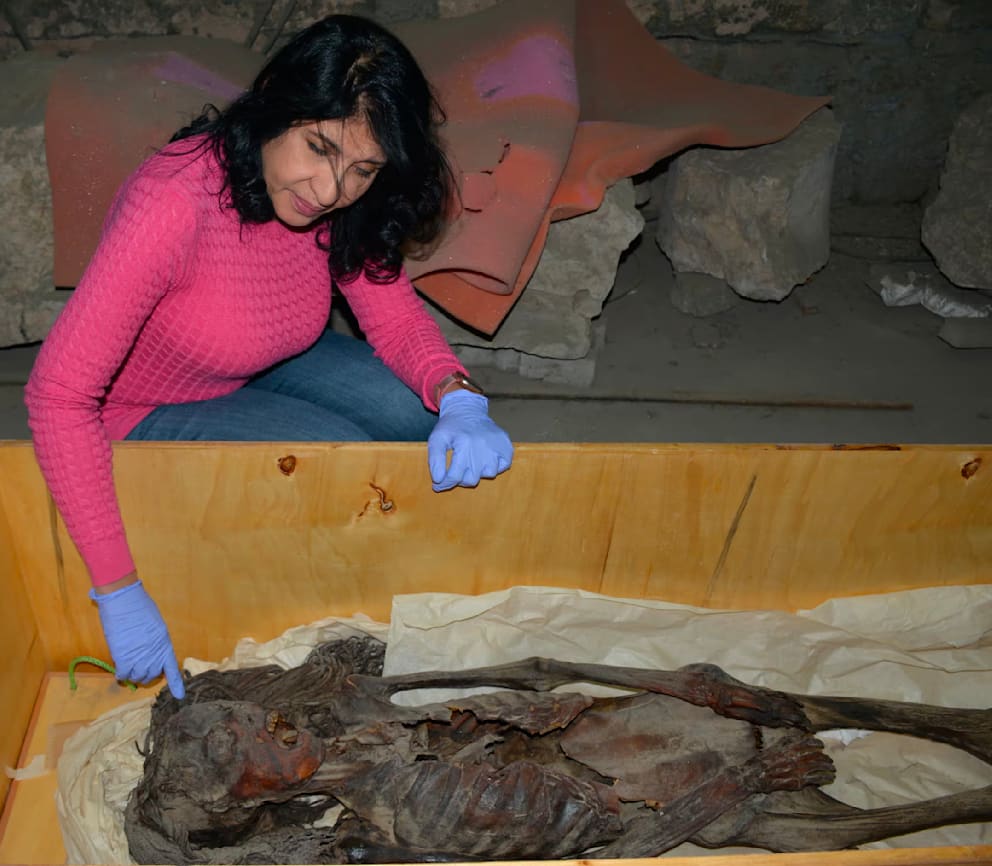Screaming mummy from Egypt: Mystery of 3500 year old tomb solved? | Life & Knowledge
It looks quite similar to Edvard Munch's painting “The Scream”: the screaming mummy of Senemut. It hides a 3,500-year-old secret that researchers now claim to have solved.
The woman was buried in 1935 in a wooden coffin under the tomb of Senenmut, an important architect under the reign of Pharaoh Hatshepsut, near Luxor (Egypt) was discovered. “It was probably a family member who was supposed to share the family resting place,” says Dr. Sahar Saleem, Professor of Radiology at Cairo University
In the journal “Frontiers in Medicine,” the researchers report how they “virtually dissected” the mummy using computer tomography (CT) and examined the skin, hair, and wig. They estimate that the woman was about 1.55 meters tall and died at the age of about 48. She also probably suffered from mild arthritis.
In the mummy This is surprising because the mummification method in the New Kingdom (1550-1069 BC) actually removed all organs except the Hearts were removed.
The woman was buried with two rings made of silver and gold, and the embalming materials also included expensive imported ingredients such as juniper resin and frankincense. The wig is made of date palm fiber and contained other minerals – possibly to stiffen the fibers and dye them black.
Facial expression could be a sign of painful death
According to the researchers, the elaborate method of mummification suggests that – contrary to what was previously assumed – it was not a coincidence or negligence that the woman was mummified with her mouth open. Rather, the facial expression could be due to a rare, sudden onset of rigor mortis.

Dr. Sahar Saleem, professor of radiology at Cairo University, examined the screaming mummy
“The reason could have been a painful death or emotional stress. The convulsions of the body could have frozen her face to the way she looked at the time of death,” says Saleem. The exact cause of death remains unclear.
Other experts are skeptical. Salima Ikram from the American University in Cairo: “I don't think the embalmer would have tried to capture this spasm for eternity.” The drying process during mummification would have taken 40 days. According to Ikram, the face could have been rearranged during this time. Other researchers believe the mouth simply fell open and stayed that way.
